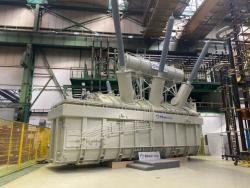
OR WAIT null SECS
© 2024 MJH Life Sciences™ and Turbomachinery Magazine. All rights reserved.
Labyrinth seals and bearing isolators for pumps
Labyrinth seals may come in a variety of forms but certainly some of the more common and effective are cartridge type labyrinth seals (often referred to as isolator type seals) that include a rotating element that is mounted on the shaft and a stationary element in the housing. Using nomenclature similar to that of motors, the rotating element is typically referred to as the rotor and the stationary element is typically called the stator. The rotor provides a flinger effect throwing contaminants off of the seal when it is rotating.
This is an excerpt from a paper," Bearing Maintenance Practices to Ensure Maximum Bearing Life" presented by Brian Dahmer of SKF USA at the 2013 International Pump Users Association.
The axial or face labyrinth created by the nesting of the rotor and stator makes it extremely difficult for any type of contamination to pass through the seal. Additionally there are typically ports at the bottom of the seal to allow any contamination that has entered the labyrinth to then exit through these ports. Lubricant is also prevented from exiting the housing keeping leakage to a minimum.
Often, the seal may integrate an o-ring that prevents ingress of moist air when the shaft is static. When the shaft rotates the o-ring then expands dynamically eliminating friction between the o-ring and the seal components. Another benefit is that when the o-ring is expanded, the housing can breath and allow warm air to exit. Since there is no contact in this seal when it is operating, no friction is created and no heat is transferred to the bearing. These designs are typically more expensive than a lip type seal but there is no wear and no heat generation making them a long term investment rather than a wear part.
Bearing isolators can be manufactured from various materials. The most common is brass or bronze. Other materials can be utilized including PTFE, stainless steel and aluminum. If needed, the seal can be optimized to the environment and types of contamination to which the isolator seal may be exposed. Magnetically charged face seals may also be a viable option to seal bearing housings. These seals use magnets to provide the force necessary to keep precision lapped face seal surfaces in contact.
Similar to the isolator type seal, one of those face seal surfaces is part of a rotor driven by the shaft and the other is part of a stationary body attached to the housing. The magnetic force compresses and aligns the mating surfaces so the seal is perfectly adjusted for life. These seals can prevent ingress of contaminant (including water wash down) as well as retain lubricant. While there is contact between the face seal surfaces, seal life is still substantially longer than that of lip seals. Some friction is created but heat generation should be less than a lip seal but more than an isolator seal. Keeping contaminant out of the housing during operation is only part of the challenge. Any time the bearing housing is opened for any reason, care should be taken to prevent ingress of contaminants. Reasons why the housing may be opened would include changing the lubricant, replacing any components including bearings or simply inspecting the components. Moisture is also a very serious contaminant.



